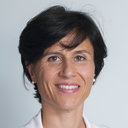Association Between Changes in Body Composition and Neoadjuvant Treatment for Pancreatic Cancer.
Nyckelord
Abstrakt
UNASSIGNED
Sarcopenia and sarcopenic obesity have been associated with poor outcomes in unresectable pancreatic cancer (PC). Neoadjuvant treatment (NT) is used increasingly to improve resectability; however, its effects on fat and muscle body composition have not been characterized.
UNASSIGNED
To evaluate whether NT affects muscle mass and adipose tissue in patients with borderline resectable PC (BRPC) and locally advanced PC (LAPC) and determine whether there were potential differences between patients who ultimately underwent resection and those who did not.
UNASSIGNED
In this retrospective cohort study conducted at 4 academic medical centers, 193 patients with BRPC and LAPC undergoing surgical exploration after NT who had available computed tomographic scans (both at diagnosis and preoperatively) and confirmed pancreatic ductal adenocarcinoma were evaluated. The study was conducted from January 2013 to December 2015. Data analysis was performed from September 2016 to May 2017. Measurement of body compartments was evaluated with volume assessment software before and after NT. A radiologist blinded to the patient outcome assessed the areas of skeletal muscle, total adipose tissue, and visceral adipose tissue through a standardized protocol.
UNASSIGNED
Receipt of NT.
UNASSIGNED
Achievement of pancreatic resection at surgical exploration after the receipt of NT.
UNASSIGNED
Of the 193 patients with complete radiologic imaging available after NT, 96 (49.7%) were women; mean (SD) age at diagnosis was 64 (11) years. Most patients received combined therapy with fluorouracil, irinotecan, oxaliplatin, leucovorin, and folic acid (124 [64.2%]) and 86 (44.6%) received chemoradiotherapy as well. The median interval between pre-NT and post-NT imaging was 6 months (interquartile range [IQR], 4-7 months). All body compartments significantly changed. The adipose compound decreased (median total adipose tissue area from 284.0 cm2; IQR, 171.0-414.0 to 250.0 cm2; IQR, 139.0-363.0; P < .001; median visceral adipose tissue area from 115.2 cm2; IQR, 59.9-191.0 to 97.7 cm2; IQR, 48.0-149.0 cm2; P < .001), whereas the lean mass slightly improved (median skeletal muscle from 122.1 cm2; IQR, 99.3-142.0 to 123 cm2; IQR 104.8-152.5 cm2; P = .001). Surgical resection was achievable in 136 (70.5%) patients. Patients who underwent resection had experienced a 5.9% skeletal muscle area increase during NT treatment, whereas those who did not undergo resection had a 1.7% decrease (P < .001).
UNASSIGNED
Patients with PC experience a significant loss of adipose tissue during neoadjuvant chemotherapy, but no muscle wasting. An increase in muscle tissue during NT is associated with resectability.


